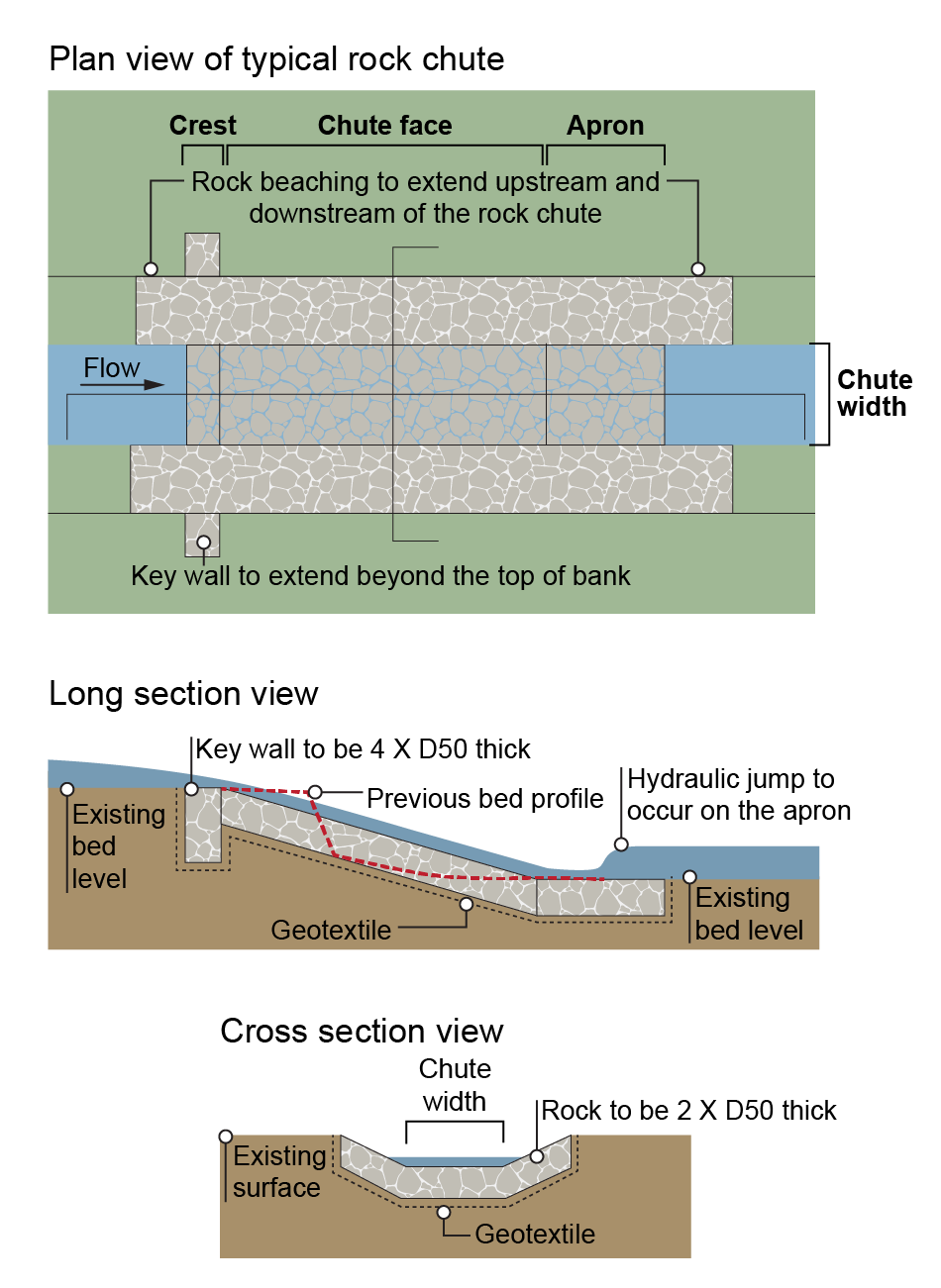|
|
Rock chuteA rock chute is a relatively short, steep grade control structure that provides a stable transition from one bed gradient to a lower bed gradient through rock armouring. Rock chutes are typically either installed to:
Rock chutes often address the symptoms of a larger problem in the catchment such as a change in the sediment or flow regime. The long-term goal should be to address these changes alongside providing sufficient local vegetation to improve the strength of the site. Potential benefits from this intervention:
Potential negative implications from this intervention:
Intervention considerations:
Additional informationPublications: Department of Sustainability and Environment (DSE). 2007. Technical Guidelines for Waterway Management, Department of Sustainability and Environment, Victoria. Keller, R.J. 2003. Guidelines for the design of rock chutes using CHUTE. Cooperative Research Centre for Catchment Hydrology, Melbourne. Last updated: 14 December 2021 This page should be cited as: Department of Environment, Science and Innovation, Queensland (2021) Rock chute, WetlandInfo website, accessed 8 May 2025. Available at: https://wetlandinfo.des.qld.gov.au/wetlands/management/rehabilitation/rehab-process/step-4/intervention-options/rock-chute-mod.html |

 — Department of the Environment, Tourism, Science and Innovation
— Department of the Environment, Tourism, Science and Innovation


